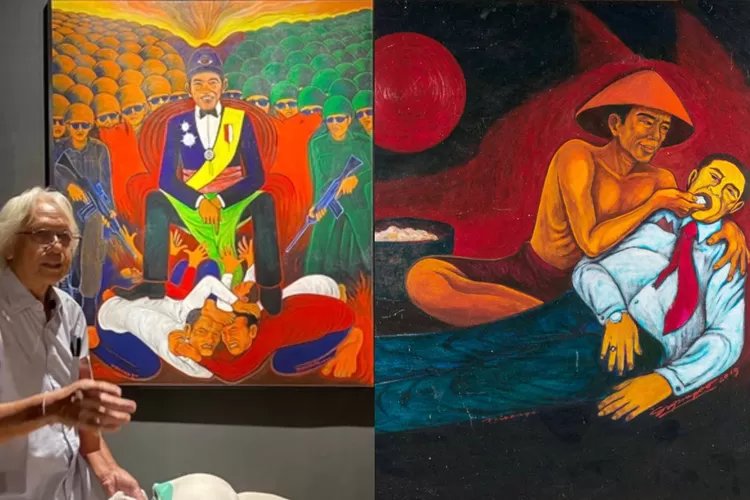
Robert Draws – Yos Suprapto breaks his silence on the controversy surrounding his solo exhibition, which has been under intense scrutiny. Originally scheduled to open on December 19, 2024, at the National Gallery of Indonesia (GNI), the exhibition was abruptly delayed due to disputes over certain artworks. During a recent press conference at the LBH Jakarta building, Suprapto shared his thoughts on the matter, providing crucial insights into the conflict. Here are the five key statements made by Suprapto regarding the ongoing polemic.
Yos Suprapto breaks silence about controversy surrounding his paintings began after the initial approval from the exhibition curator, Suwarno Wisetrotomo. According to Suprapto, the curator had already seen the five paintings in question multiple times before the objection arose.
“I live in the same city as the curator, and he came to my house three times. Specifically for the works he later described as vulgar, he did not object or say they were unfit for exhibition,” Suprapto explained.
The artist emphasized that the curator never told him the paintings were inappropriate at any point before the controversy erupted. Contradicting the claims that the works were problematic from the start.
“Read about: The Future of the Mona Lisa: Will the Iconic Painting Stay at the Louvre?”
It wasn’t until December 17, when Suprapto displayed his paintings at GNI, that the curator raised his objections. According to Suprapto, it was at this point that Suwarno Wisetrotomo expressed concerns over two of the paintings. Particularly those featuring a former Indonesian president.
“That day, the curator raised his objections and covered the paintings Konoha 1 and Konoha 2 with black cloth,” Suprapto shared.
This late-stage objection added fuel to the controversy. Especially considering that the exhibition was just days away from its scheduled opening. Suprapto’s remarks question the true nature of the objections. Whether they were made with genuine artistic concerns or due to external pressures.
“Read more: Elegance and Meaning: Why Diamond Jewelry Makes a Perfect Christmas Gift”
Yos Suprapto argued that the actions taken by the curator and GNI to remove the disputed paintings amounted to censorship. The curatorial team insisted that the five controversial works be taken down. Despite Suprapto’s insistence on displaying them.
“I perceive this as censorship. They forbade the display, and the works were removed. What else would you call it if not censorship? They banned the display, and there’s no other term for it,” Suprapto stated, stressing his view that the removal was an act of censorship.
This perspective sparked a broader conversation about the boundaries of curatorial authority and whether institutional control is overstepping the limits of artistic freedom.
One of the key points of contention was the accusation made by Indonesian Minister of Culture, Fadli Zon, who described the paintings as vulgar. Suprapto strongly rejected these claims. Stating that the works should not be viewed in such a way. He defended the use of nudity in his paintings. Arguing that it symbolized purity, not obscenity.
“We are born naked, without clothes. That represents innocence,” Suprapto explained. “If someone calls it immoral, then it’s their limited perception, not the artwork’s fault.”
Through this statement, Suprapto questioned the tendency to equate nudity with immorality, challenging the way art is sometimes misinterpreted based on cultural or moral biases.
During the press conference, a lawyer from LBH Jakarta weighed in on the legal implications of the situation. Asserting that the demand to remove the paintings and delay the exhibition violated human rights. According to the lawyer, the actions taken against Suprapto’s exhibition contravened Indonesia’s constitutional and international human rights protections.
“This is a violation of the right to freedom of expression, as guaranteed by Indonesia’s 1945 Constitution and international agreements like the Universal Declaration of Human Rights,” the lawyer argued.
The legal standpoint highlights the larger issue of censorship and freedom of expression in Indonesia, suggesting that the dispute is not just about one exhibition but about the fundamental rights of artists to express themselves freely.
Yos Suprapto’s statements offer a deeper understanding of the controversy surrounding his exhibition and raise important questions about artistic freedom, censorship, and human rights in Indonesia.